


































November 2025 • Volume 72, No. 11
CEO Michael Shepard
SENIOR VP OF CONTENT Leon Espinoza
EDITORIAL DIRECTOR Chasity Anderson, CCC
DEPUTY EDITORIAL DIRECTOR
Noble Sprayberry
SENIOR EDITOR Jennifer Paton, CCC
ASSISTANT EDITORS Victoria Hampton, CCC; David Herder, CCC; Sable Riley, CCC; Nina Todea, CCC
ASSOCIATE EDITORS
Valeri Saldanha Rosa
PUBLICATIONS PRODUCTION SR. MANAGER
Elizabeth Beatty
SENIOR PUBLICATIONS COORDINATOR
Alyssa McDougle
Ruralite (USPS 397-460) is published monthly for members for $5.73 per year, plus postage, by Pioneer Utility Resources Inc., 5625 NE Elam Young Parkway, Suite 100, Hillsboro, OR 97124—a not-for-profit Oregon cooperative corporation—to serve the communication needs of 46 consumer-owned electric utilities in Oregon, Washington, Alaska, Idaho, Nevada and California. Preferred periodical postage paid at Hillsboro, Oregon, 97123 and additional mailing offices. © 2025 Pioneer Utility Resources. All rights reserved. Reproduction in whole or in part without written permission is prohibited.
Postmaster: Send address changes to Ruralite, 5625 NE Elam Young Parkway, Suite 100, Hillsboro, OR 97124-6454
HOW TO CONTACT RURALITE
Subscription services:
Nonmember subscriptions $15 (U.S.) per year; $25 per year (foreign). Prepayment required. Allow 4-8 weeks for first issue. Be sure to identify which local edition you want to receive.
Address Changes:
Utility members, contact your local utility. Subscribers, call us at 503-357-2105, option 3, or email mailingdept@pioneer.coop.
Back issues:
Back issues and extra copies are $3. Prepayment required. Supply is limited. Be sure to identify edition, month and year. Call first if ordering back issues to check availability.
To contact Ruralite: Ruralite magazine is published by Pioneer Utility Resources, P.O. Box 1306, North Plains, OR 97133-1306; 503-357-2105; email: info@pioneer.coop. For more information, visit pioneer.coop.
DISPLAY ADVERTISING INQUIRIES
American MainStreet Publications
611 S. Congress Ave., Suite 504 Austin, TX 78704
800-626-1181 or 512-441-5200

For supplemental and interactive content, search @Ruralite on your favorite social media sites.
The simplest acts of kindness can create the most profound transformations. This month’s stories celebrate people who understand healing doesn’t always require grand gestures or massive resources. Sometimes it just takes showing up with exactly what someone needs.
Clarissa Black discovered this truth more than 15 years ago when she brought her huskymalamute mix, Bear, to visit veterans at a VA medical center more. Bear had an uncanny ability to sense what each person needed. When someone required quiet company, he could lie perfectly still for hours. When people looked into his eyes and spoke to him, he’d cock his head and respond with one of his signature husky “woos.”
That experience sparked Pets for Vets, which has since matched more than 800 specially trained companion animals with veterans living with post-traumatic stress disorder, traumatic brain injuries and other challenges. The matching process reflects Clarissa’s core belief that the most powerful relationships happen when both parties get what they need. It’s not just about finding a good dog—it’s about finding exactly the right dog.
Rhiannon Menn’s story follows a similar arc. When the COVID-19 pandemic left her San Diego neighbors isolated and struggling, she started leaving pans of homemade lasagna on their doorsteps.
What began as one person’s simple response to community need evolved into Lasagna Love, a nonprofit that’s delivered meals to more than
23 million people in four countries.
“Radical kindness and generosity continues to spread,” Executive Director Andria Larson says. “What better way to do that than a pan of homemade lasagna?”

Both organizations understand something essential: Healing happens through connection, and connection often starts with meeting basic needs. A veteran struggling with isolation finds purpose through caring for a dog who needs him just as much as he needs the dog. A family stretched too thin finds hope in a warm meal delivered with a note of encouragement. These aren’t abstract solutions—they’re tangible expressions of care that remind people they’re not alone.
What moves me about this month’s stories is how they challenge our assumptions about what it takes to make a difference. We don’t always need special training, substantial funding or elaborate programs. Sometimes the most meaningful help comes from noticing what’s needed and responding with what we have. It’s the transformative power of showing up.
Until next time, Chasity Anderson Editorial Director

Up Close, Page 10
Layers of Love
Organization matches those in need of a meal with a home-cooked lasagna Spotlight, Page 12

At Lassen Municipal Utility District, we believe in more than just providing power—we’re committed to empowering our community’s youth. LMUD’s range of youth engagement programs reflects our dedication to safety, education and community support.
High-Voltage Safety Demonstration: Prioritizing Safety Safety is our No. 1 priority for our employees and the people we serve. That’s why we offer a High-Voltage Safety Demonstration to groups and organizations in our service area. This eye-opening program illustrates the potential hazards of coming into contact with power lines. The demonstration is available at no cost to all groups and organizations and is suitable for audiences of all ages.
Our Jr. Energy Auditor program, designed for fourth and fifth grade students, aims to spark conversations about energy conservation and raise awareness about LMUD’s role in the community. Each participating student receives a Jr. Energy Auditor kit with a backpack, notebook, workbook and writing supplies. The program features in-class energy conservation and awareness presentations, supplemented by engaging animated videos demonstrating energy-saving techniques.
To provide hands-on experience, we lend each classroom a Kill-a-Watt meter, allowing students to measure energy consumption firsthand. Upon completing their workbooks, students are rewarded with a $10 gift certificate to Margie’s Book Nook, our local bookstore.
LMUD is proud to offer the Community Scholarship program, designed to support our local students in their pursuit of higher education. This program is open to graduating seniors and continuing college students whose primary residence is served by the district. The program offers two $1,250 scholarships for graduating seniors and one $500 scholarship for a continuing college student.

Scholarship applications can be submitted through LMUD’s website beginning in February with a submission deadline of April 30.
We understand the importance of flexibility in education, which is why our scholarships can be applied to a variety of institutions. The funds are paid directly to qualified two-year, four-year or vocational institutions, supporting students on their chosen educational paths.
As a publicly owned utility, LMUD is committed to being an integral part of our community. We offer sponsorships for a wide range of youth-focused events and activities, subject to specific guidelines. These sponsorships must benefit local, nonprofit organizations within LMUD’s service territory and focus on youth, from preschool children to college students. Sponsorships are limited to $300 each and one per year, per organization.
For more information on any of these programs, to schedule a High-Voltage Safety Demonstration or to learn more about our scholarship opportunities, call LMUD’s public relations manager at 530-257-4174.
Through these programs, LMUD demonstrates its commitment to fostering a safe, educated and engaged community. We believe that by investing in our youth, from preschool through college, we’re investing in a brighter future for all. n
By Scott Flood and Jennifer Paton
The wind howls outside your windows as a major storm system blows through the area in the late evening. Your lights flicker for a moment or two before you’re plunged into darkness. The social media feed on your phone is packed with reports of damage and power outages, and the storm shows no sign of letting up for hours. Fortunately, you had the foresight to
service. That’s why many consumers consider buying backup generators to provide for their family’s needs while waiting for service to resume.
Backup generators fall into one of two categories. Standby generators are permanently wired into the home’s electrical system by a qualified electrician. They come in various sizes so homeowners can match the generator to their home’s power needs.
Portable generators, as the name implies,
plane during the daytime.
“If the power goes out in the middle of the night, there is literally no way to get to a place with power when the islands go dark,” Manager of Communications Krista Bouchey says. “Most islanders are prepared to deal with power outages one way or another, but if you have medical needs or a freezer full of meat, a lot of locals invest in generators.”


anyone who accidentally comes in contact with power lines. Backfeed can also damage the generator.

While line crews at Consumers Power Inc., based in Philomath, Oregon, occasionally encounter unsafe generator connections, it’s not the only hazardous practice they’ve witnessed.
“We’ve also seen situations where members try to improvise connections, sometimes using extension cords or makeshift wiring, which can create fire hazards or damage sensitive electronics,”
Chief Member Officer Jon Kloor says. “These kinds of unsafe hookups not only endanger our employees but also pose a risk to the member’s home, family and neighbors.”
These potential hazards are why permanently installed generators are required to have a transfer switch, which should be installed by a qualified electrician. The transfer switch creates a barrier between your home’s electrical system and outside wires so backfeed cannot occur. When the transfer switch senses power has been restored, it switches the power from the generator back to the
The biggest danger associated with backup generators is one that’s invisible and deadly. Because backup generators burn
fossil fuels, they generate a variety of gases, most notably carbon monoxide. One portable generator can produce as much CO as hundreds of cars, according to the Consumer Product Safety Commission. The agency reports nearly 100 Americans die each year because of CO poisoning from backup generators. That’s why generators should only be used in dry, well-ventilated areas away from your home and garage.
CO gas is also odorless. The National Institutes of Health warns that CO can kill in as little as five minutes. People exposed to CO typically become dizzy, feel nauseated and experience headaches. Often, they lose consciousness before noticing any symptoms. Anyone exposed to CO should be moved to fresh air immediately.
If you buy a portable generator, protect your home and family by taking the time to read the manufacturer’s instructions. Don’t use portable generators in rainy or wet conditions unless you keep them wellventilated and dry.
When starting a portable generator, make sure nothing is plugged into it. You can reduce the potential for damage to your appliances and lighting by turning them off or unplugging them from the wall. After the generator starts, plug



X Never connect a portable generator directly to your home’s wiring. Standby generators must be permanently wired by a qualified electrician.
X Always plug appliances directly into generators.
X Use heavy-duty, outdoor-rated extension cords.
X Ensure your generator is properly grounded.
X Never overload a generator.
X Turn off all equipment powered by the generator before shutting it down.
X Keep the generator dry.
X Always have a fully charged fire extinguisher nearby.
X Never fuel a generator while it is operating.
X Read and adhere to the manufacturer’s instructions for safe operation.
Information courtesy of the National Rural Electric Cooperative Association
them in and turn them on one at a time to make sure you aren’t overloading your generator’s capacity. Unplug them from the generator before turning off the generator. Unless the manufacturer recommends otherwise, always turn the generator off and allow it to cool before adding fuel.
Finally, as with many home appliances, regular maintenance is the key to ensuring your portable generator operates safely for years to come. When storing it, drain the fuel from the tank. In addition, check the oil and fuel levels, filters and other components once a season so you know it will be ready to run safely and efficiently the next time a big storm blows through. n
Lassen Municipal Utility District is proud to introduce Bidgely, a new energy management tool available through your SmartHub account. Bidgely puts the power of your energy data in your hands, helping you understand how and when you use electricity.
Bidgely is an AI-powered platform that analyzes your home’s energy use down to the appliance level without the need for extra devices or manual input. Whether you’re curious about how much energy your refrigerator uses, how much of your bill is attributable to your electric water heater, or how your habits affect the bottom line, Bidgely gives you clear, personalized insights.
With Bidgely, you can:
• See which appliances use the most energy.
• Keep track of your energy use.
• Get tips to reduce your bill and improve efficiency.
• Receive alerts and recommendations tailored to your home.
It’s like having a personal energy adviser available 24/7 right from your SmartHub dashboard. Understanding your energy use isn’t just about saving money. It’s about control, choice and sustainability. Bidgely helps you:
• Plan for seasonal changes;
• Spot unusual spikes in energy use;
• Make informed decisions about when and how you use your electricity.
Whether you rent or own your home, Bidgely gives you the tools to take charge of your energy.
Enrolling is easy:
• Log in to your SmartHub account at lmud.org.
• Click on the “Usage Explorer” or “My Energy Use” tab.
• Follow the prompts to activate Bidgely insights.
• Start exploring your personalized energy dashboard.
As your community-owned utility, LMUD is committed to transparency, innovation and customer empowerment. Bidgely is part of our ongoing effort to provide tools that help you understand your energy use, make informed decisions and plan for the future.
LMUD is excited to bring you this new resource and here to help every step of the way. Have questions? Call 530-257-4174 or visit lmud.org and click on the green banner at the top of the






















Pets for Vets is a four-star-rated, nonprofit organization that relies on donations to provide free services to veterans. There are several ways to donate.
Donate online: Visit petsforvets.com/donate to make a secure online donation.
Donate by mail: Pets for Vets Inc., P.O. Box 10860 Wilmington, NC 28404
By Jen Calhoun
When Clarissa Black first took her husky-malamute mix, Bear, to visit veterans at a Veterans Administration medical center, she had no idea he was about to change hundreds of lives.
Of course, she knew Bear was special. He had a way about him. When someone needed quiet company, Bear could lie perfectly still for hours. If someone was working on improving mobility, Bear would position himself at the perfect distance, paws up, as if to offer encouragement. And when people looked into the dog’s eyes and spoke to him, he’d cock his head and let out one of his husky “woos” right on cue.
“People really felt like he was talking to them,” says Clarissa, whose background in animal science and anthrozoology gave her a deeper insight into the interactions. “They felt seen, and they felt heard.”
Clarissa’s experience with Bear at the VA hospital sparked the idea for Pets for Vets, a nonprofit organization that matches veterans with specially trained companion animals. Since she founded it more than 15 years ago, Pets for Vets has matched more than 800 animals with veterans across the country.
The program generally serves veterans dealing with posttraumatic stress disorder and traumatic brain injuries, but the organization is open to helping any vet who could benefit from a deep connection with a pet. While the service is completely free to the veterans, it relies on donations from the public and a network of more than 100 volunteer animal trainers across the United States.
Other ways to give: The organization accepts cryptocurrency and vehicle donations, including cars, trucks, boats and motorcycles.
Volunteer: Fill out the volunteer form at petsforvets.com to offer your time and expertise.
For more information about the program or to apply for a companion animal, visit petsforvets.com or email contactus@petsforvets.com.

After Leif Mesinger returned home from Iraq, the world felt different. It was harder to navigate and harder to understand. The Army infantryman and gunner suffered a traumatic brain injury from an improvised explosive device blast, and it changed everything.
“My mind was racing, and I struggled to communicate,” Leif says in a Pets for Vets testimonial video. “I felt disconnected from everything I used to know.”
Help arrived in the form of a tiny, hairless waif of a dog named Spyder. Clarissa Black, founder of Pets for Vets, discovered the dog after meeting with Leif and finding out what he might need in a companion animal.
Spyder’s superpower was that he loved to jump into people’s laps and lick them. It was a trait Clarissa intentionally honed in Spyder before presenting him to Leif. She knew that kind of gentle, rhythmic contact could ground a person dealing with anxiety.
In time, Spyder’s constant presence gave Leif a growing sense of purpose and a deepening bond. Thanks to more than 15 years with Spyder, Leif’s communication with others has improved and his life is more fulfilling than ever.
“Spyder was kind of like that saving grace that centered me again and brought me back,” he says.
It’s important to note that Pets for Vets animals aren’t service dogs that have been highly trained to assist people with disabilities. Still, the organization works hard to meet the veterans’ needs as well as the animals’.
“We’re not just asking what the dog gives the veteran,” Clarissa says. “We want to know what the veteran gives the dog. We’re looking for that reciprocal match where both are getting exactly what they want.”
LEFT: Spyder’s tendency to jump in laps and lick faces helps calm and center Leif Mesinger when he feels frustrated. PHOTOS COURTESY OF PETS FOR VETS
OPPOSITE PAGE: Clarissa Black, founder and executive director of Pets for Vets, with her late dog, Bear, who sparked the idea for the nonprofit organization.
Once the group approves a veteran’s application for a companion animal, the search gets underway. Clarissa’s experience as a marine mammal trainer taught her the most powerful relationships happen when both parties get what they need. The process isn’t about finding a good dog. It’s about finding exactly the right dog.
The matching process is not only thorough, it’s personal. Veterans work closely with trainers to identify their needs and prepare for pet ownership.
“We spend a lot of time getting to know our veterans, finding out what it is they need, what they’re looking for and what would be a good fit for them,” Clarissa says. Meanwhile, trainers visit shelters and rescue groups to conduct one-on-one “interviews” with potential companion animals, which can include cats, rabbits and other species, as well. If a veteran enjoys outdoor activities, for example, the trainer might look for a more active dog that loves to fetch and hike. On the other hand, a more sedentary vet might need a peaceful pooch or calm cat.
From there, each animal undergoes foundation training customized for its future human. During this time, which often
takes place in a foster situation, trainers enhance what Clarissa calls the animal’s “superpowers,” or the natural behaviors that made them perfect for their veteran in the first place.
“Ultimately, that connection is what’s going to fulfill them and maybe even heal them,” she says. “There’s some research out there that suggests that it’s not just any dog, it’s the right dog—the dog that people feel connected to—that can help mitigate anxiety and depression.” n
Born of the pandemic, organization matches those in need of a meal with a home-cooked lasagna
By Cheré Coen
It’s a common dilemma, one that unfortunately plagues society daily. The world’s so big and full of pain, what can one person do?
Rhiannon Menn found the answer in a pan of homemade lasagna.
The need in Rhiannon’s community became painfully clear in 2020 as she witnessed medical workers in San Diego stretched thin and families and individuals isolated inside their homes during the COVID-19 pandemic. California was the first state to shut down, and many residents lost their jobs, leaving some destitute. Rhiannon began making meals she left on doorsteps— a pan of lasagna to feed her neighbors and remind them they weren’t alone.
What she didn’t expect from her simple act of comfort-food kindness is how the neighborhood, then the city, then the world, would react.
As word spread about Rhiannon’s lasagnas, others reached out, asking to join the effort. A network soon came together to match those in need with home chefs wanting to cook. No one asked questions or required information from those seeking help. They just offered support within a home-cooked meal.
“It started to grow like firecrackers,” says Andria R. Larson, executive director of Lasagna Love, the nonprofit that grew out of Rhiannon’s original delivery. “We were able to bring people together through nourishment.”
As word got out in late 2020, Rhiannon and Andria had to develop spreadsheets to keep up with the demand. A volunteer from the Massachusetts Institute of Technology helped develop their website.
“We were just random acts of kindness that came together,” Andria says. “And the ripple effect keeps going. We’re now in four countries and all 50 states.”


Lasagna Love’s mission is simple: address food insecurity in an oldfashioned way, with a home-cooked dish. Those in need—people who have lost their job or housing, families struggling to make ends meet or even college students away from home longing for a home-cooked meal—can register on Lasagna Love’s website. The main office sends on the information to local leaders throughout the United States, Canada, Australia and the United Kingdom, who match them with home chefs. The lasagna chefs are volunteers—as are 99% of the organization’s members. The chefs buy the ingredients, prepare the lasagnas and deliver the meals to recipients with notes of encouragement.
Not everyone who volunteers with Lasagna Love cooks. Some donate money and ingredients, while others provide administrative help.


“Some love to cook, some want to donate their skill set,” Andria says. “They are all part of the larger mission.”
To date, more than 23 million people have been affected by Lasagna Love, with more than 80,000 volunteers serving up assistance in one capacity or another. Lasagna Love ambassadors deliver, on average, 3,500 lasagnas each week.
“Radical kindness and generosity continues to spread,” Andria says. “What better way to do that than a pan of homemade lasagna?”
Andria insists that even those who have difficulty in the kitchen can create a pan of lasagna.
“It’s really not that complicated,” she says. “It’s meat, sauce, noodles, cheese, and repeat.”
main ingredient is always a desire to help.
“Through all of it, kindness continues to be needed and woven back into our community,” Andria says. “No one should be without food, but we find many in need.”
Home chefs may be individuals, families or groups, but the primary contact must be at least 18 years old.
In Tennessee, state director Melanie Johnson finds many groups wanting to
community service goals with earning a Lasagna Love Patch. To receive a patch, Scouts explore how to initiate positive change in their neighborhoods, engage in activities that match the core values of Lasagna Love and explore the challenges individuals face today, such as food insecurity. Participating troops help address local waitlists by preparing and delivering meals “while learning invaluable skills and fostering a spirit of
Radical kindness and generosity continues to spread. What better way to do that than a pan of homemade lasagna?
— Andria R. Larson, executive director of Lasagna Love
Some recipe tweaks are necessary if recipients have dietary restrictions. For instance, some noodles might need to be gluten free, and vegetarians may request a meatless dish. Many chefs incorporate family recipes, so recipients receive a meal that’s been beloved for generations. Some chefs may use recipes from the main office, along with a tutorial on how to put the pieces together.
No matter which recipe is used, the
serve lasagna weekly across the state. She continually works with church groups, parents homeschooling their children and those looking for community service hours. Members of a ladies group in Clarksville deliver their lasagnas once a quarter. She’s even had a yoga class volunteer.
“It’s a great group activity,” Melanie says. “For families, it’s a great opportunity to involve kids at different age levels.”
Lasagna Love recently partnered with the Girl Scouts to marry the Scouts’
altruism,” according to the organization.
Andria agrees that creating and delivering lasagna is “passion work” and fosters the idea of a village mentality when society’s support systems fail or are not in place. She insists volunteers receive just as much emotional support as the recipients.
“It’s an emotional connection that you can’t duplicate,” she says of cooking and delivering the meals. “This is definitely more than lasagna.”


For recipients, it’s as easy as signing up on the Lasagna Love website. There are no hoops to jump through, no paperwork to determine need. No fee is required, and privacy is paramount. Deliveries are contact-free to the doorstep unless the recipient requests otherwise. Recipients set the time, date and place of the delivery, and the process crosses all language and cultural barriers.
Sometimes, it’s not the lack of finances that brings people to Lasagna Love. It may be someone in need of emotional sustenance.
“Most people have a need, but sometimes it’s a harried parent who’s working and tired of bringing home fast food,” says Brenda Walkenhorst, local leader for the New Orleans metropolitan area. “You don’t have to show reason.”
For some, it’s the first time they have asked for help. The lack of bureaucracy eases their anxiety, Andria says.
“We want to make the experience easy,” she says. “There’s no judgment, no qualifications. Hard times can happen anytime. We don’t want people to face it alone. We’re here.”
Lasagna Love is always in need of volunteers—and not just those who love to cook. The organization accepts donations, and sponsors may be called on to do everything from helping in the organization’s administration to providing ingredients to chefs each month.
“It’s a way for people to get involved without cooking,” Andria says.


Volunteers may cook as many or as few lasagnas as they’re able, as individual volunteers or as a group activity. Many volunteers use the opportunity to create lasagna with family members, church groups and other organizations. They sometimes add their own styles to the pan.
Those who wish to cook must complete a brief online training course on safe food preparation and share how often they wish to take part. Volunteers may participate as much or as little as they are able.
The ripple effect Rhiannon and Andria started in 2020 remains, Andria says, and the organization continues to grow thanks to the steady stream of volunteers. This year, Lasagna Love began spreading kindness in the United Kingdom.
“One of the things I did not expect from a group of five women to the state we are in now was being able to see how many people generally want to help,” she says. “It really is impressive to see.” n
For more information about Lasagna Love, visit lasagnalove.org.
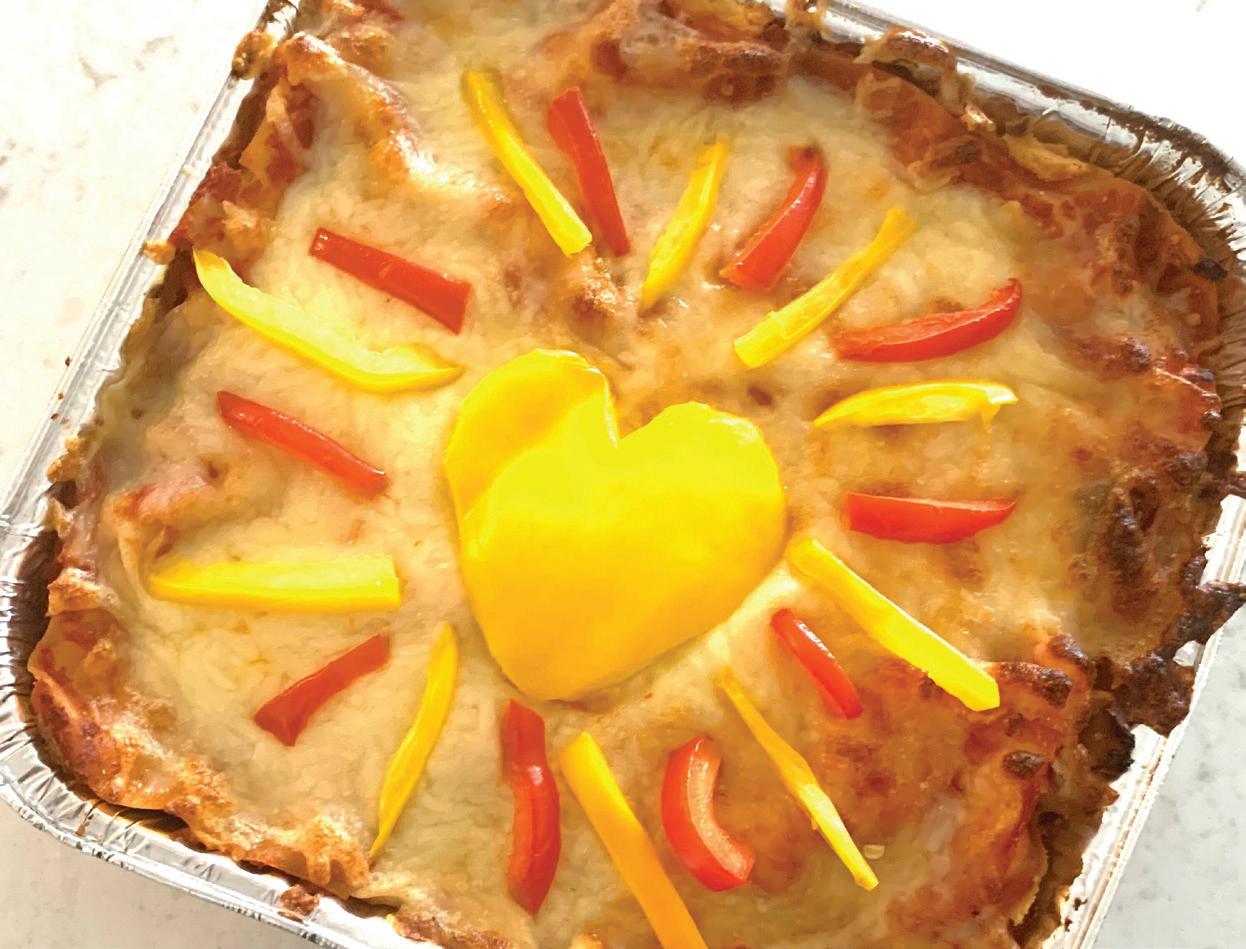
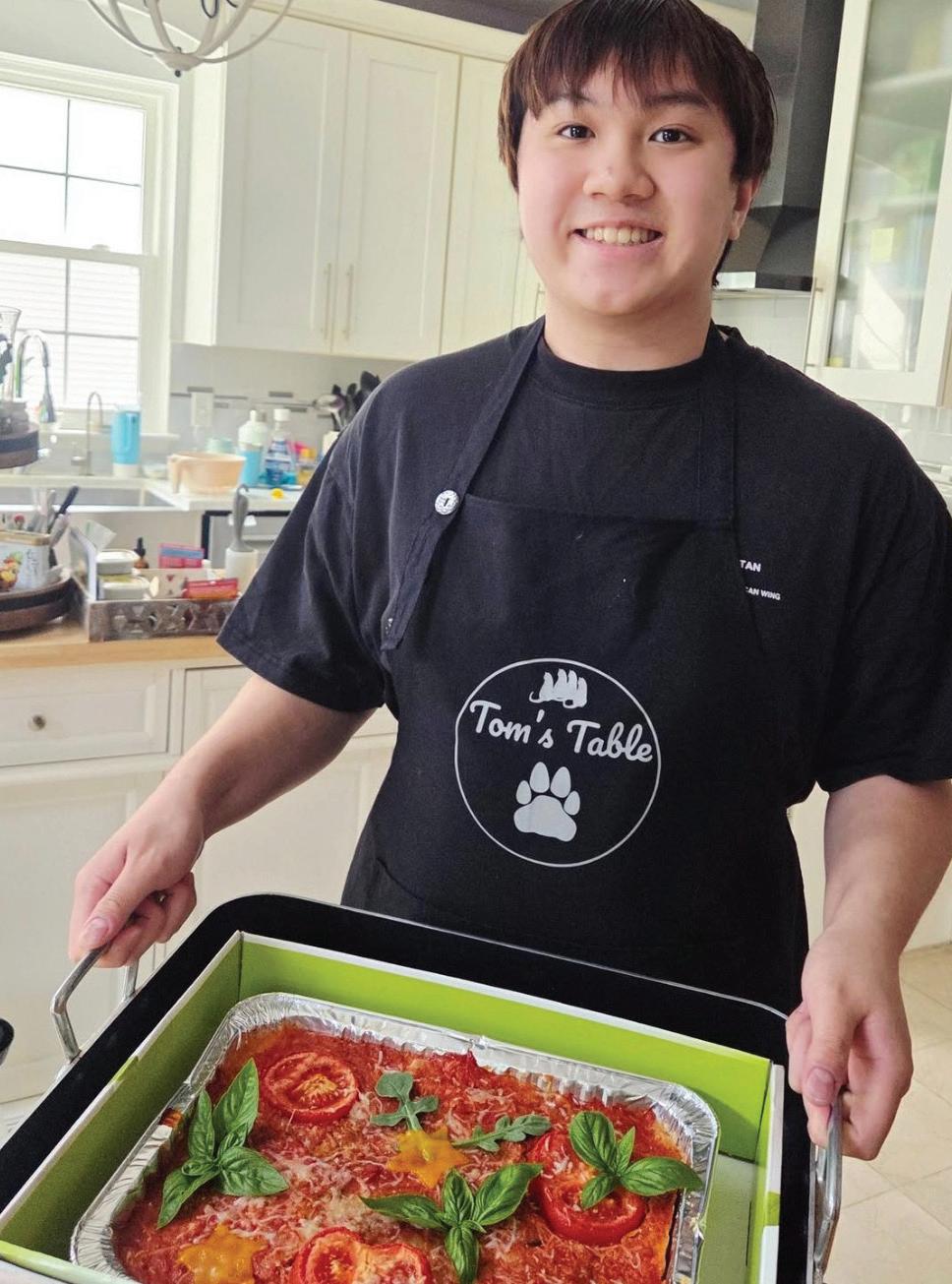

Messages of hope are delivered with each pan of lasagna.




Monday is Justine Drewery’s work day.
For the past two-plus years, Lasagna Love’s local leader for Seattle has gathered information gleaned from the main office to match her volunteers with recipients of home-cooked pans of lasagna. She reads the recipients’ stories to make sure none requires emergency services—which is rare—and looks for dietary restrictions, such as gluten intolerance. Justine then sends out a call to her 115 active volunteer chefs—home cooks who make the lasagnas and deliver them throughout the Seattle metropolitan area.
“We service a large area, from Marysville to Kent,” Justine says. “It’s pretty much all of Seattle.”
Lasagna Love doesn’t require its chefs to meet the lasagna recipients. This ensures privacy for both parties.
“It’s supposed to be contactless,” Justine says. “We don’t want to make the recipients uncomfortable.”
Shawn Burkland has been a Seattle-area
Lasagna Love volunteer since 2021, getting involved shortly after the organization began. When she returned home from working overseas, Shawn was searching for a way to help her community.
“I love to cook and I thought, ‘What can I do to give back with my cooking?’” Shawn says. “Lasagna Love’s a wonderful organization. It’s been a great match.”
As of late summer, Shawn has cooked 149 lasagnas, delivering them to recipients up to 30 miles away. She’s brought lasagnas to apartments, tiny homes and even to an unhoused recipient on a street corner. During the pandemic, she rarely met the people receiving her meals, but today, she prefers the connection.
“I don’t force it, but I have met almost every one of my deliveries,” she says. “Most people actually want to meet you. So many people are so appreciative. Everyone has been delightful.”
In the beginning, Shawn experimented

with ingredients, creating lasagnas with sausage and vegetables, such as onions, peppers and carrots. She quickly learned tastes vary widely, plus a standard recipe makes it easier to cook in bulk, so she now keeps it simple.
“To me, because I make so many, I keep it plain,” Shawn says. “And people like it plain. It’s still delicious.”
In addition to providing the Seattle area with lasagna love, Justine engages in outreach to keep the process moving smoothly. She uses social media, such as Facebook, and other online resources, such as Volunteer Match, to attract volunteers and recipients. Her biggest success comes from local food banks and through flyers delivered to libraries, she says.
Once a year, volunteers work with the city’s Festa Italiana, an all-volunteer community event the last week of September at the Seattle Center. Justine’s chefs demonstrate making lasagna and offer samples to the crowd. n
1½ cups chickpea flour
3 cups water
1 teaspoon coarse kosher salt, plus extra for sprinkling

Recipes by Gertrude Treadaway
2 tablespoons chopped fresh parsley
1 pinch fennel seeds
Sunflower oil for frying
Lemon wedges for serving
Place chickpea flour, water and salt in a medium-sized saucepan. Whisk until smooth. Set over medium heat, and whisk constantly as the mixture slowly heats. Keep whisking, scraping the bottom and sides of the pan frequently, until the mixture is smooth, thick and starts to pull away from the sides of the pan, about 5 minutes. Remove from heat. Stir in parsley and fennel seeds.
Pour mixture onto a parchment-covered baking sheet that is approximately 12-by-15 inches. Quickly spread the mixture with a spatula, before it cools and sets, so it fills the pan in an even layer, about ¼-inch thick. Refrigerate for about an hour, until completely firm.
Once cooled, cut into squares with a sharp knife. Carefully lift the pieces from the pan with a spatula or your hands.
To fry the panelle, pour enough oil into a wide, heavy skillet to cover the bottom to a depth of ½ inch, and set over medium heat. When the oil is hot, fry the panelle about 3 minutes, until the underside is crisp and golden. Flip and brown the other side, about 2-3 minutes.
Place the panelle on paper towels to absorb excess oil. Sprinkle lightly with salt and a squeeze of lemon juice. Serve hot.
1 yellow onion, diced
1 tablespoon olive oil
4 cloves garlic, minced
1 teaspoon oregano
½ teaspoon chili flakes
14-ounce can chickpeas, drained and rinsed
½ cup sundried tomatoes, sliced
1 can full-fat coconut milk
3 tablespoons tomato paste
Salt, to taste
Pepper, to taste
1 cup baby spinach
4-5 fresh basil leaves, julienned
Garlic naan
In a large pan over medium heat, saute onion in olive oil until translucent, about 3-4 minutes. Add garlic, oregano and chili flakes. Saute for another 1-2 minutes.
Add chickpeas, sundried tomatoes, coconut milk, tomato paste, salt and pepper to the pan. Bring the mixture to a low simmer, then reduce heat to low. Simmer for 10-15 minutes.
Add basil and spinach. Stir until wilted. Serve with naan.
Creamy Chickpea Tomato Soup
3 garlic cloves, unpeeled
4 medium, fresh tomatoes
1 small yellow onion, sliced into quarters
1 tablespoon extra-virgin olive oil, plus more for drizzling
½ teaspoon sea salt, plus a pinch for sprinkling
Freshly ground black pepper
1/3 cup canned chickpeas
14-ounce can diced tomatoes
1 tablespoon balsamic vinegar
½ teaspoon maple syrup
2 teaspoons fresh thyme leaves
¼ to ½ teaspoon red pepper flakes
Croutons or crusty garlic bread
Heat oven to 450 F. Line a baking sheet with parchment paper.
Wrap garlic cloves in a piece of foil. Place them on the baking sheet with whole tomatoes and onion wedges. Drizzle with olive oil and a pinch of salt and pepper. Roast for 20 to 25 minutes, or until tomatoes and onions are browned. Peel garlic, and transfer roasted vegetables to a blender.
Reduce oven to 400 F. Line baking sheet with a fresh sheet of parchment paper.
To the blender, add chickpeas, canned diced tomatoes, vinegar, syrup, thyme, 1 tablespoon olive oil, red pepper flakes, ½ teaspoon sea salt and freshly ground pepper. Blend until creamy. Taste and adjust seasonings as desired. At this stage, the soup should still be hot. If not, pour into a pot to reheat. Serve with croutons or garlic bread.
Chickpea Korma Curry
1 tablespoon coconut oil
1 medium onion, finely diced
1 tablespoon garlic, finely chopped or minced
1 tablespoon fresh ginger, finely chopped or grated
1 tablespoon fresh green chili, finely chopped
1 tablespoon mild curry powder
1 teaspoon ground coriander
½ teaspoon turmeric
½ teaspoon ground cardamom
½ teaspoon ground
cinnamon
2 tablespoons tomato paste
2 tablespoons butter
1 can coconut milk
2 cans chickpeas
½ teaspoon salt
A handful fresh cilantro, roughly chopped
Cooked rice or naan
Heat coconut oil in a large, deep pan. Cook onion for 3-4 minutes over medium heat.
Add garlic, ginger and fresh green chili. Cook for 1 minute.
Stir in spices, and cook for 1 minute. Add tomato paste, butter and coconut milk. Stir to combine until sauce is smooth.
Add chickpeas and salt. Bring to boil, then lower heat. Cover the pot, and simmer for 10 minutes. Stir in cilantro. Serve over rice or with naan.
1 tablespoon olive oil
½ onion, chopped
1 clove garlic, minced
1 tablespoon chili powder
1 tablespoon cumin
1 teaspoon turmeric
1 teaspoon garam masala
1 teaspoon sea salt
Dash of cinnamon
Dash of cayenne
2 14-ounce cans chickpeas, drained and rinsed
2 14–ounce cans fireroasted diced tomatoes, undrained
Cucumbers, chopped
Couscous, cooked
Mint, minced
Parsley, minced
Cilantro, minced
Yogurt or hummus
Olive oil
Lemon juice
Toasted pita wedges
Heat olive oil in a large skillet over medium heat. Add the onion, and saute until soft. Add garlic, spices, salt and chickpeas. Stir until fragrant. Add tomatoes. Simmer for 20 minutes while preparing the other ingredients.
Arrange bowls with desired amounts of remaining ingredients.
I make hats for veterans and homeless people, so I’m looking for scrap yarn to make hats. Any donations will be appreciated. Thank you.
Elizabeth Martensen 1015 Madrona Ave. Tillamook, OR 97141
My mom and my father had a cabin in The Narrows on the Wilson River. They met during World War II and were together until he passed at 75. One of their favorite things to do in Tillamook was collect seashells on the beach. Now that mom is in assisted living, she doesn’t get to collect new shells and misses my dad dearly. If you have extra shells to add to her collection and any encouraging notes, I know she should love them.
Please send to Mary Finn, 8685 SW 151st Place, Beaverton, OR 97007.
Sheila Finn Green Valley, Arizona
Philatelists, I have a collection of used stamps from 138 foreign countries, some no longer exist. All are individually packaged by country. Another 86 packages of used USA stamps are separated by denomination. I’ll send them free of charge and postage paid if you’re interested. They belonged to my deceased brother who enjoyed collecting them from neighbors, friends and church members. I would like them to go to someone who would appreciate them.
Rich Tempelman
5684 S. Desert Lakes Drive Fort Mohave, AZ 86426 rtempelman1944@gmail.com
I had an ad several years ago asking for quilting scraps. I make quilts of all sizes and donate them to care and pregnancy centers to help young women who don’t have a lot for their babies. It’s so rewarding. With that said, if you have any spare fat quarter or other scraps—as in 6-inch squares on up—I will gladly put them to good use. Thank you in advance.
Kimberly Cody
298 Basham Lane Troy, MT 59935
Our dear father turns 100 later this month. He is a wonderful father of seven children. He served his community wherever he lived and is a World War II Navy veteran. He would love to receive cards. Thank you in advance. Please send cards to Hugh Whitbread, 3234 S. Nye, Apt. 25, Pendleton, OR 97801.
Gail Hogge Adams, Oregon
My mom turns 100 this month. She received cards from many of you on her 90th birthday, and I would like for her to receive 100 cards for this birthday. Reading her mail is one of the highlights in her day. Please send birthday cards to my mom: Rachel Farnsworth, P.O. Box 545, Doyle, CA 96109.
Ruby Pourchot Doyle, California
My parents have had a momentous year celebrating their 90th birthdays, and they celebrate their 69th wedding anniversary this month. However, these wonderful milestones have also come with many health challenges, activity limitations and adjustments in living arrangements. They would love to receive cards from you to brighten their spirits. My mom, Beverly, was a school lunch manager, tremendous cook and caregiver. She loves to color and do crafts. My dad, Tom, plays old-time fiddle music on his bass and banjo. He also enjoys woodworking and loves to talk. They lived their whole lives in rural areas and small towns in Idaho. Your cards and well wishes would be greatly appreciated. Send to Tom and Beverly Hackwith, 813 Airway Ave., Lewiston, ID 83501.
Pam Gehrke Boise, Idaho
Happy Thanksgiving!
Wow. My grandmother Marian and our family wish to express gratitude for the incredible outpouring of cards, artwork, cookie recipes, recollections and blessings that were sent in celebration of her 100th birthday. She’s saving the greetings in a scrapbook and has organized the recipes to keep her busy as she tests baked treats for a long time to come. Thank you.
Cora Rose Brookings-Harbor, Oregon
Send your request (no attachments) to readerexchange@ruralite.org or mail to Reader Exchange, 5625 NE Elam Young Parkway, Suite 100, Hillsboro, OR 97124. Fill in the subject line with Reader Exchange.
Acceptance, scheduling and editing are at the editor’s discretion. Single requests only, please. No duplicates. If replying to a reader submission, please only send what is requested. Submissions are handled first-come, first-served as space allows. We cannot honor every request.
Please affirm you have authorization from all appropriate parties before submitting. By submitting, you indemnify Reader Exchange, Pioneer Utility Resources Inc., its officers, directors, employees, utility clients and insurers from all legal liability incurred by the publication of information. We no longer accept pen pal requests. You may submit a pen pal request as a Marketplace ad (pricing applies).
When submitting a milestone request, please send it at least two months before the milestone. Phone numbers are not published. Email addresses are if they are part of the ad, but you must include a postal address. Requests must include the name and address of the electric utility that provides your magazine.












Each winter, snowfall in Lassen Volcanic National Park blankets a landscape that was previously covered by lava. Mountain peaks, remnants of volcanic activity and pristine nature draw visitors to the more than 100,000-acre park in Northern California.
The park was shaped by volcanic activity over hundreds of thousands of years. Most recently, the park has seen eruptions from Lassen Peak roughly 100 years ago. Lassen is one of the best places on Earth to see all four types of volcanoes: shield, composite, cinder cone and plug dome.
Lassen Volcanic National Park typically gets up to 30 feet of snow between November and May. The snow will eventually melt into four different watersheds. Because of the snow, Highway 89—the main road travelling through the park—is often closed for the season starting in mid-November. Check the National Park Service site for up-to-date closure information.
When covered with snow, the park is a popular area for snowshoeing and cross-country skiing. The area around Manzanita Lake offers easier slopes and routes— although at 5,800 feet of elevation, you’ll still breathe heavy. One of the easiest tracks is the 1.5-mile Manzanita Campground loop, while the more difficult Chaos Jumbles Area has excellent views.
The park requires an entry pass and has moved to a cashless fee-collecting system. For more information on passes, closures and to start planning your trip, go to nps.gov/lavo or call 530-595-6100.

As one of the largest purveyors of collectible knives in the country, you can trust Stauer to give you the best knife for your money.
Case in point: The Blades of a Feather Knife –– a remarkable hunting and adventure knife with an even more remarkable price.
This is the kind of knife people flock to.
This stick tang knife boasts a stainless steel blade with a scalloped edge that gives it a distinct feathered appearance. This “feathered” edge is more than a striking aesthetic touch; it enhances the knife’s performance by creating air pockets in the spaces. These air pockets prevent shredding and allow for a cleaner, smoother cut. Consider it your edge up.
Recalling the days of the great American frontier, this knife’s artisan handle is crafted of natural bone, redwood and brown Pakkawood. It’s a great addition to your collection, and will prove a trusty companion for all your outdoor adventures from hunting and fishing to camping and hiking. It also makes one heck of a letter opener. Plus, by making the call today, you are guaranteed to receive a genuine leather sheath in the deal.
Your satisfaction is 100% guaranteed. Feel the knife in your hands, wear it on your hip, inspect the impeccable craftsmanship. If you don’t feel like we cut you a fair deal, send it back within 30 days for a complete refund of the item price.
We invite you to join the hundreds of thousands of Stauer knife collectors who appreciate a fine blade along with a fine deal. We assure you, you’ll be in good company. Don’t let this beauty slip through your fingers. Call today!

Knife Speci cations:
Call today and you’ll also receive this genuine leather sheath!
• Stainless steel stick tang blade; 12” overall length
• Natural bone, redwood & brown Pakkawood handle

Blades of a Feather Knife $249 $49* + S&P Save $200 California residents please call 1-800-333-2045 regarding Proposition 65 regulations before purchasing this product.
*Special price only for customers using the offer code.
1-800-333-2045
Your Insider Offer Code: BFK157-02

feel of this knife is unbelievable... this is an incredibly fine instrument.”




























NIKON D810, 48mm lens ISO 160, f/4.5 at 1/200


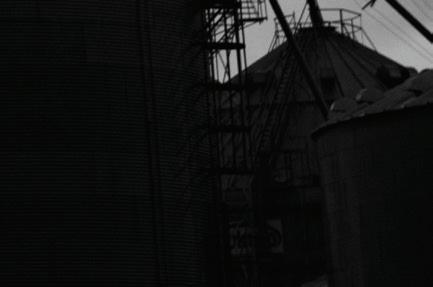






By Dave LaBelle
One of the most famous Christ statues in the world sits on the summit of Mount Corcovado in Rio de Janeiro, in southeastern Brazil. Christ the Redeemer was built in 1931 and stands 98 feet tall.
There is no shortage of statues honoring Jesus Christ across the globe. Many cemeteries, often Catholic, have Christ statues as their centerpieces.
Even as a young photographer, I have always been drawn to cemeteries, especially older ones, with interesting lines, shapes and simple markers. Some of the cemeteries in the Midwest and South often have unusual, contrasting backgrounds.
Cemeteries are usually places of tranquil respite from the rest of the loud and busy world. Like most who wander among the headstones reading names, dates of birth, dates of passing and farewell sentiments, I find graveyards a place to rest and maybe even reset priorities.
When I see others cleaning gravesites or placing flowers, I often approach them and ask about those they are visiting. Most are willing to talk about loved ones gone and often thank me for asking. However, I also realize not everybody can visit a cemetery, nor do they feel comfortable sharing with a stranger.

Photographer, author and lecturer Dave LaBelle has captured special moments for more than half a century, sharing photo tips and life perspectives with readers. For more of his writings, visit davidlabelle.com and his blog at bridgesandangels.wordpress.com.
Find a cemetery, preferably one that has served an area for decades, even centuries. Go early or visit late in the day and study the lines, shapes and tones. Walk quietly, listening. See if you can make a photograph that embodies the unusual beauty or serenity of the place. Moments when snow blankets the earth are great times to visit and photograph.
Email your best image—just one—with caption information, including an explanation of how it affects you, to gph@pioneer.coop. We may share submissions on our website and social media channels.


Centuries ago, Persians, Tibetans and Mayans considered turquoise a gemstone of the heavens, believing the striking blue stones were sacred pieces of sky. Today, the rarest and most valuable turquoise is found in the American Southwest–– but the future of the blue beauty is unclear.
On a recent trip to Tucson, we spoke with fourth generation turquoise traders who explained that less than five percent of turquoise mined worldwide can be set into jewelry and only about twenty mines in the Southwest supply gem-quality turquoise. Once a thriving industry, many Southwest mines have run dry and are now closed.
We found a limited supply of turquoise from Arizona and purchased it for our Sedona Turquoise Collection . Inspired by the work of those ancient craftsmen and designed to showcase the exceptional blue stone, each stabilized vibrant cabochon features a unique, one-of-a-kind matrix surrounded in Bali metalwork. You could drop over $1,200 on a turquoise pendant, or you could secure 26 carats of genuine Arizona turquoise for just $99.
Your satisfaction is 100% guaranteed. If you aren’t completely happy with your purchase, send it back within 30 days for a complete refund of the item price.
The supply of Arizona turquoise is limited, don’t miss your chance to own the Southwest’s brilliant blue treasure. Call today!
Jewelry Specifications:
• Arizona turquoise • Silver-finished settings
Sedona Turquoise Collection
A. Pendant (26 cts) $299 * $99 +s&p Save $200
B. 18" Bali Naga woven sterling silver chain $149 +s&p
C. 1 1/2" Earrings (10 ctw) $299 * $99 +s&p Save $200 Complete Set** $747 * $249 +s&p Save $498
**Complete set includes pendant, chain and earrings.






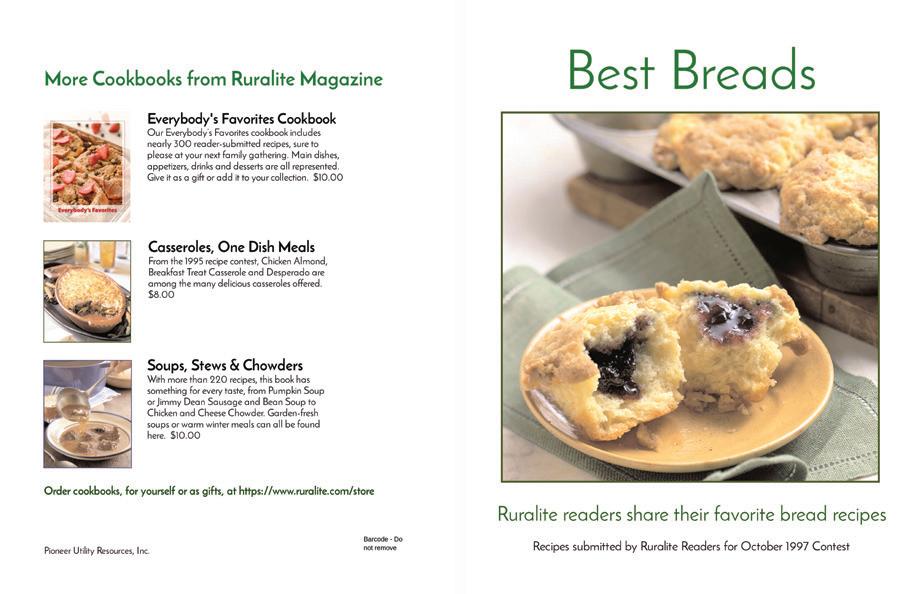
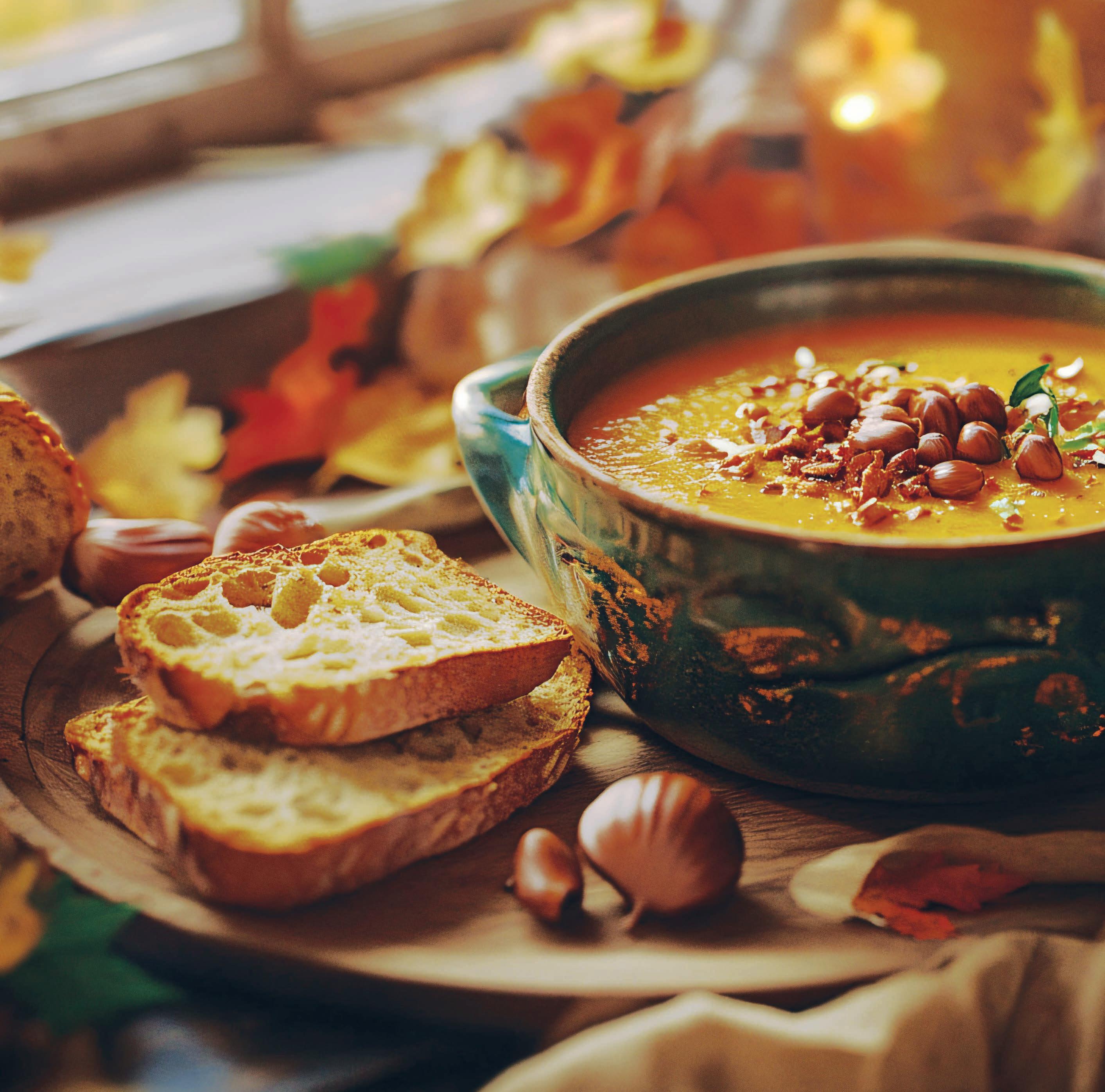
Discover all 13 of our cookbooks at www.ruralite.com. Each measures 8.5-by-11 inches. Prices shown include postage and tax.
Please allow two to three weeks for delivery.
ORDER BY MAIL: Submit payment with cookbook title, your name, address and number of cookbooks wanted to:
Ruralite Cookbooks P.O. Box 1306 North Plains, OR 97133

PAY BY PHONE: Call 503-357-2105 for credit card payments with Visa, MasterCard, Discover or American Express.
ORDER ONLINE: Visit www.ruralite.com and find Store.
BY THERESA PHILLIPS

As temperatures drop across Lassen County, Lassen Municipal Utility District’s Winter Energy Assistance Rate is here to help income-qualified customers manage their energy costs.
From November through April, eligible households receive a 50% discount on the first 1,500 kilowatt-hours used each month. This support makes a real difference when heating systems are working overtime.
Find income guidelines and fill out a simple application at lmud.org. Paper applications are available at the LMUD office, the Lassen Economic Development Corporation in Westwood or by calling 530-257-4174.
WEAR is more than a discount. It is LMUD’s commitment to community care. We’re here to help keep the lights on and the heat flowing. n
Agriculture
4x5 round bales, Meadow foxtail orchard grass. 4x4 timothy, small square. 208-435-4637 or 208-435-4002; nas@cpcinternet.com. 1225
Reinforced custom-sized pond liners (39 cents/sqft). Hay covers, greenhouse covers, any width and length. Truck tarps and more. High-puncture and tear strength. Best price guaranteed. Celebrating 44 years in business. btlliners.com. 541-447-0712.
Buying antiques and collectibles: advertising signs, porcelain signs, gas pumps, beer signs, antique toys, cast-iron coin banks, neon signs and more. Jason, tjabaughman@yahoo.com or 503-310-3321. 0326
Buying American Indian collectibles, Navajo jewelry, blankets, rugs. CA/AZ baskets and beadwork. Quality paintings of the early Southwest and Americas. Call 760-409-3117 or send photos to amer.ind.baskets@gmail.com.
1950s Monarch piano. Good condition, dark finish. Upright, 45x56x24”. Call Becky, 541-676-5342 or evanslive@hotmail.com.
Classic ’89 Reatta. 120K miles. Clean, runs great. $4.5K. OBO. 541-894-2423. 1125
Books, Magazines, Videos
Book restoration. Bibles, cookbooks, cherished family heirlooms. Beautiful work. We give renewed life, more durable than original, to last for generations. 775-537-7066; salacanstudio@gmail.com. 1125
Business Opportunities
For sale: quaint hardware store in Maupin, OR. Inventory and interior store recently updated and refreshed. See ad on Bizbuysell.com or email Maupincountrystore@gmail.com. $129K. 1125
Community Events
Art Center East’s 17th annual Handmade Holidays Makers Market. Nov. 21-22. Local and regional artists/artisans. La Grande, OR. artcentereast.org. 1125
Free Item
Free materials. When church/government unite, enforcing Sunday Law, the “Mark” of the “Beast” is here. Don’t be deceived, be informed. Leave mailing address only, TBSM, P.O. Box 374, Ellijay, GA 30540. 888-211-1715; tbsmads@yahoo.com. 1225AR
Ads 25 words or fewer are $35 a month. An extended ad of up to 35 words is $50 a month. Contact information is included in the word count. Phone numbers and emails count as one word.
Longer ads may be placed. Contact 503-357-2105 or info@pioneer.coop for pricing information.
Ads are for customers of member co-ops, public utility districts and municipals only. Subscribers and nonmembers may inquire about pricing at 503-357-2105 or info@pioneer.coop.
Ads must be direct and in first person, and are subject to approval and editing.
Closing deadlines (in our office): January issue—Dec. 1, 2025.
If submitting ad by mail, send appropriate payment with your name, address, email, phone number and the name of the electric utility that provides your magazine to: Marketplace, P.O. Box 1306, North Plains, OR 97133. Make check or money order payable to Ruralite.
We accept credit card payments for ads submitted by email. Send ad to info@pioneer.coop. Call
Advertisements are accepted in good faith. Pioneer Utility Resources is not liable for interactions between buyers and sellers.
We ship vintage Santa letters and natureinspired artwork from Alaska for holidays and gift giving. Choose from Santa letter bundles, watercolor prints, cards, block prints, earrings and more. GV11 saves 10%. PamelaSueArtandDesigns.com. 1125
Stained glass supplies: glass, grinder, books, tools, lead, solder irons, light box, etc. $200 OBO. Kennewick, WA. Have photos of stuff. Contact drew.g.kachele@gmail.com or 509-627-3811 (landline). 1125
Granite cemetery markers at affordable prices. Will ship to most places. For more info: highdesertmemorials.com; Joe, 541-815-8906 or highdesertmemorials@gmail.com. 1125
Crushed rock for sale. John Long quarry on John Long Road at Rice Hill. 541-459-3072.
Attention, landowners. Grants available now. Wildland fire fuel reduction service. Steep ground, remote, rocky, small lot, big acreage, no problem. Blue Mountain Defensible Space LLC. Bluemountainbrush@gmail.com; Bluemountainbrush.com; 509-399-3473. 1126
Tulsa 3-stage gear reduction. Good for building 4-ft. tunnel digger, as track drive for Link Belt or P&H 100-ton crane. Ted, 458-910-3727. 0126
30x50x14’ Quonset hut. 16-gauge galvalume with connector plates. 10x10’ opening. 76 PSI snow load, 169 mph wind. Baker City, OR. $17.5K. 541-206-8584. 1125
Beautiful John Day, OR home with fabulous golf course views on 4 acres. $520K. Duke Warner Realty, ddwr@ortelco.net, 541-987-2363.
320 acres east of Adel, OR. Borders Hart Mountain views, Steens Mountain and Beaty Butte. Landowner tags, very rural. $147K. Quick sale, due to injury. For maps: thejugglingman3@gmail.com; 541-659-1573.
Let me help you buy or sell ranch, farm and recreation property in OR. Fourth-generation Oregonian, prior ranch owner. For sale: Klamath Marsh, OR. 173.65 acres. $2.5M. Guest Ranch Overlay. John G., 541-480-9161; johngill@landandwildlife.com. Land and Wildlife brokerage.
1996 Redmond single-wide manufactured home in Prairie City, OR. 56x14’. 2 bd., 1 ba. Needs some TLC. Priced right. $13K. Serious inquires only. 541-610-4797. 1125
10 acres in Northern New Mexico. Good for off-grid homestead or vacation cabin. 50 miles from Taos. $16K. Consider trade for park model. 520-260-4095; adironrick@gmail.com. 1125
80 patented acres. Gold property, approximately 22 miles north of Nome, AK. Water on property. Accessible by 4x4s. Not maintained. Call, 775-990-3444. 1125
Recreational Rentals
Oceanfront cottage with direct beach access, on the spectacular Central Oregon Coast. Sleeps 6. All house amenities. Winter closure November-March. Reservations/information, email relax@wavecatcherbeachrentals.com or text 541-740-2846 or 541-740-9953. 1125
Recreational Vehicles
2016 Coachman Prism, 2150 LE, 25’ Class C motorhome 3500 Freightliner chassis, V6 Mercedes, one owner, 72K, very good condition. Call for details, 541-478-3312. $55K.
1998 Jayco 28’ 5th wheel, gooseneck adapter. Great condition. Covered storage. Never leaked/smoking. Many upgrades. Slide-out. Winterized. $6.5K, OBO. Serious inquiries only. For photos/details, email mountainmeadow@protonmail.com.
Resorts, Camps, Tours, Lodges
Cruises: Alaska, Caribbean, Mediterranean, Panama Canal, Hawaii and more. River cruises, safaris, resorts. UdoU Travel LLC: udoutravelllc.com, 541-256-0100; cindygreenup@gmail.com. 1125
Services
Dawn Till Dusk Masonry. Brick, block, stone and pavers. Small jobs and repairs welcome. dawntillduskconstructionmasonry.com; 541-388-7605; 541-410-6945. License #245760 bonded and insured. La Pine, OR. 0226
Blue Mountain Defensible Space LLC Wildfire Fuel Reduction: clearing brush, thinning trees, animal habitat enhancement. Expert service. Grant money available OR, WA, ID. Bluemountainbrush@gmail.com; 509-399-3473; Bluemountainbrush.com. 1126
67-year-old city boy, 5’8”, 230 lbs. Brown eyes, silver hair. Doesn’t drink or smoke, good looking. Looking for pretty female companion age 57-67. Date for breakfast or lunch, just looking for a good time and good conversation. Sparks or no sparks, we’re adults and will figure it out. Casa Grande, AZ, and surrounding areas only. Contact, amaliaven11@gmail.com.
Old carpenter tools, planes (wood/metal), levels, chisels, slicks, adzes, axes, hatchets, handsaws, old rulers, spoke shaves, wrenches, shipwright tools, old tool chests. 503-659-0009; 971-666-0659. 1125
Gold, silver, coins/currency, buy, sell. Collections wanted. Fair prices paid. 45 years in retail store. Baker City, OR. 800-556-2133; garrymclin@aol.com. 1026
Buying American Indian collectibles, Navajo jewelry, blankets, rugs. CA/AZ baskets and beadwork. Quality paintings of the early Southwest and Americas. Call 760-409-3117 or send photos to amer.ind.baskets@gmail.com.
Cash paid for old gas station and oil company signs, pumps, globes, metal oil cans. Good condition. Discreet cash settlement. Clifton Jones, collector. 512-413-4459. 1225
Wanted: Kodak Carousel 860-slide projector. Mine does not work. Need to see slide trays from 1970s. Call/text Claudia, 541-251-1944.



As we head toward winter, cooler temperatures make a hot bowl of soup, stew or chowder a welcome treat. Get more than 220 recipes in a perfectbound 8½-by-11-inch indexed book for $10, postage included. When ordering, specify you want the “Soup, Stews and Chowders” cookbook. Check out other titles at ruralite.com.

Eatonville United Methodist Church A Spiritual Base Camp On The Way To Paradise. Mashell Avenue North P.O. Box 205 Eatonville, WA 98328 360-832-4021
Home: 360-832-4562 Pastor Bernard Preston Ritchea Cell: 361-330-9666
Facebook: Eatonville United Methodist Church of Washington OPEN HEARTS OPEN MINDS OPEN DOORS OPEN TABLE WORSHIP SERVICE BEGINS AT 10:30 a.m.
Artificial intelligence can draft job hazard analyses, summarize safety reports or even generate sitespecific assessments—all in minutes.

tools
By Shane Schwartz and Victoria Hampton
Artificial intelligence is no longer just a trendy, high-tech buzzword used by data scientists and Silicon Valley firms. Today, electric utilities across the country use AI to transform the way they power local communities. From improving reliability and safety to enhancing member services and streamlining daily operations, AI helps utilities do more with fewer resources.
Public power utility employees are known for wearing many hats. They are utility operators, first responders and local economic development engines. For many small electric utilities, limited staffing and tight budgets can make it difficult to explore new technologies. AI tools can fill these gaps by doing timeconsuming tasks—in the field and at the office—to better serve local communities.
AI tools—especially large language models like ChatGPT and Gemini—are increasingly easy to use and can speed up tedious processes when used properly. Automating routine tasks and quickly analyzing data lightens the burden on many small utilities

with lean staffs, from operations and information technology to communications teams.
Most AI tools follow a simple process:
1. Gather data. Relevant information is pulled from internal systems or spreadsheets.
2. Interpret data. AI can summarize or organize data and flag potential issues.
3. Apply a prompt. Tested prompts ask AI to perform a specific task or analysis.
4. Provide insights. AI-generated outputs inform business decisions or create reports.
With AI, these tasks take anywhere from a few minutes to a few hours to complete. Saving time—or creating the time to do previously out-of-reach projects—can have long-lasting, positive impacts across multiple departments.
Some of the most promising applications for AI include:
AI can quickly scan datasets to detect unusual patterns, such as early signs of equipment failure before they escalate to power outages.

Some utilities use AI to analyze historical data on electricity demand, weather trends and consumer behavior to forecast future demand. With simple prompt-based tools, electric utilities can generate predictions—helping them plan for high-demand periods without complex software or extended staff resources.
Valley Electric Association in Pahrump, Nevada, uses AI to stay on top of infrastructure projects and grid expansion.
“Utilizing large language models has provided great starting points in summarizing and analyzing technical documents, contracts and regulatory filings,” says Gabe DeGuzman, VEA director of transmission services and load management. “While citing and due diligence still need to be performed, AI has allowed us to advance to critical thinking stages at a much faster pace.”
By combining satellite imagery, lidar data and AI-powered image recognition, utilities can assess vegetation and prioritize projects more efficiently—proactively preventing disruptions and reducing manual fieldwork.
The two-person vegetation management team at Northern Lights Inc. in Sagle, Idaho, uses AI to help oversee the cooperative’s vast, densely forested service territory, where wildfire risk is high and winter storms are common.
“They’re responsible for trying to stay on top of an area the size of the state of Connecticut,” says Matt Price, NLI’s manager of information technology. “There’s a very legitimate concern of wildfire risk and hazard risk.”
NLI uses Overstory, an AI-powered tool that relies on satellitebased cameras to analyze risk trees along the co-op’s power line rights of way.
“It analyzes large areas of risk very quickly at a reasonable cost in ways we can’t do with boots on the ground,” Matt says. “You’re not replacing workforce. You’re empowering our workforce to do a better job.”
Large language models are proving to be quick with administrative tasks: summarizing long reports, drafting job descriptions and member-facing messages, and analyzing social sentiment around new rates and services.
“Using AI-powered tools, I can quickly generate customized, clear and inclusive job descriptions tailored to our specific roles and industry standards,” says Jessica Renneker, VEA’s director of human resources and safety. “AI also helps me identify biased language and optimize keywords to attract the right candidates while ensuring legal and organizational compliance.”
Jessica also uses AI to analyze employee surveys, helping create a more diverse, engaged and effective workplace culture.
For Amy Carlson, VEA’s director of corporate affairs and community relations, AI tools help her communications team stay on top of community needs. By using AI to analyze feedback, team members identify issues as well as opportunities for improvement.
“It even fuels creativity by generating fresh campaign ideas and slogans aligned with our mission,” she says.
In many ways, artificial intelligence feels like magic. Type a request, and within seconds you have a response. With answers immediately at our fingertips, it’s important to know how this new technology operates. Here are four principles to help identify fact from fiction in the everevolving world of AI tools.
AI is a tool, not an expert. AI doesn’t think like humans. It can’t understand context or meaning. Instead, it uses math to process patterns and make predictions. Take the time to interpret all AI-provided information.
AI learns from what you tell it. Just like social media platforms, every word, photo and video uploaded into an AI tool may be recorded, stored and analyzed. That is why personal and sensitive information should never be shared.
AI hallucinates. When answering a person’s request, an AI model imagines a data pattern and presents its best guess. AI datasets have information on all sorts of topics, but not all information is complete or reliable. Ambiguous questions can result in oversimplified answers and disconnected ideas.
AI is biased. AI pulls from datasets created by humans. Societal and historical biases, as well as a lack of complete datasets, can result in misleading information.
Knowing how AI works can help you understand the value and limitations of new technology.
When using AI tools, utilities take essential steps to protect consumer information and organizational data. This means using licensed, professional AI software, implementing AI security policies and training staff in safe use of AI tools.
“As a professional organization, we educate our workforce on using platforms that are licensed and built for business to ensure we have good control and understanding of how our data is utilized,” Matt says.
AI certainly isn’t a one-size-fits-all solution, but it can be a powerful tool when applied thoughtfully. For electric utilities, it’s not about chasing tech trends—it’s about solving real-world problems, reducing strain on limited resources and delivering more value to communities. n


Nature surprises us through sunsets, picturesque landscapes and even by friendly wildlife visits to your backyard.
“‘Moose-sensitive plants are behind the tall chain-link fence, but this year, I discovered they also like Swiss chard,” Anita Hartmann says after a mother moose and her twins visited her garden.
To submit your photo, email a JPEG to photos@pioneer.coop. Include “Before You Go” in the subject line and share a bit about what inspired you to make your photo. n
A moose and her twins help clean up garden beds in Fairbanks, Alaska, at the end of the growing season.
PHOTO BY ANITA HARTMANN




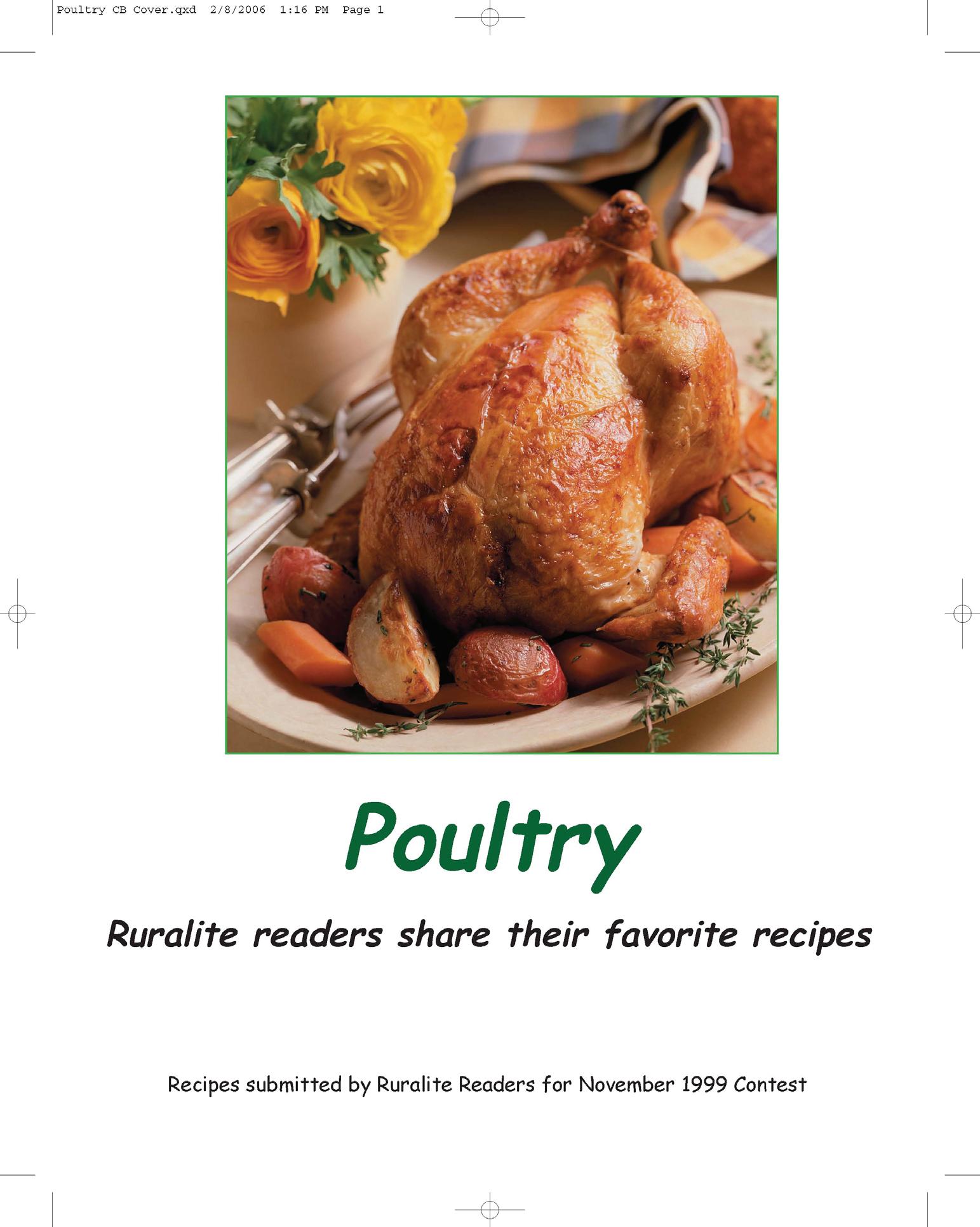
Chicken, turkey and other poultry star in this cookbook from our 1999 contest. Dishes include salads, casseroles and main dishes. Among the featured recipes are Chicken Quiche, Ground Turkey Meatloaf and BBQ Emu Meatballs. The 8½-by-11-inch indexed book is $8 (includes postage).
TO ORDER BY MAIL:
Submit payment with cookbook title, your name, address and number of cookbooks wanted to:
Ruralite Cookbooks
P.O. Box 1306
North Plains, OR 97133

TO PAY BY PHONE: Call 503-357-2105 for credit card payments with Visa, MasterCard, Discover or American Express.
TO ORDER ONLINE: Visit www.ruralite.com.
Please allow two to three weeks for delivery.

65 S. Roop St.
Susanville, CA 96130
Phone: 530-257-4174
Fax: 530-257-2558
lmud.org
Board of directors
Fred Nagel, President
Jess Urionaguena, Vice President
David Ernaga, Treasurer
Daren Hagata
Charity Moore
staff
General Manager
Nick Dominguez, MBA
Electric Operations Manager
Cort Cortez
Business Manager
Kelli Thompson, MBA
Administrative Services Manager
Karen Rollings
Accounting and Finance Manager
Heather Glover
Public Relations Manager
Theresa Phillips, CCC
Customer Service Manager
Christina M. Nystrom
IT Manager
Thomas Plummer
In case of an outage: If your electricity is off for more than a few minutes, call 530-257-4174. Office hours are 8:30 a.m. to 4:30 p.m. Monday through Friday. Outside of normal business hours, calls are monitored by our answering service and forwarded to the appropriate LMUD personnel.
The board meets at 5:30 p.m. the fourth Tuesday of each month.
As we prepare to start a new chapter at Lassen Municipal Utility District, we do so with a clear vision: strengthen our infrastructure, improve reliability and deepen our commitment to our customers.
The December 2026 completion of the Skedaddle Substation and NV Energy intertie will mark a major milestone in our journey. This project will reduce our reliance on a single transmission line and diversify our energy sources, bringing greater stability to our system and peace of mind to customers.
But our work doesn’t stop there.
With the board of directors’ approval of a four-year capital improvement plan during this year’s budget process, LMUD is shifting focus inward to the systems, equipment, facilities and people that directly impact our community every day. This plan represents a strategic investment in the future of our utility, our community and the reliability of your power.

This year, we launched several key projects aimed at improving power quality, reducing outage time, and enhancing customer service:
• Voltage regulator replacements are underway to enhance power quality for customers. These new regulators are equipped with remote monitoring and control capabilities, allowing our operations team to detect and respond to issues more quickly, potentially reducing outage durations and improving system performance.
• We’ve begun line hardening and enhanced vegetation management on the I-203 line to Eagle Lake. These efforts will reduce the frequency and length of outages in the area.
• Work continues on our $13 million grant funded transmission upgrade between Westwood and Susanville. This investment in long-term reliability and fire safety includes widening utility easements and rebuilding infrastructure.
• We’re in the design and preconstruction phase of the 50 N. Gay St. building remodel. This project will upgrade our customer service facilities, create a more welcoming space for public meetings and improve the working environment for our employees.
Through these changes and upgrades, our mission remains unchanged: to provide safe, reliable and affordable electric service. These investments are not just about poles and wires. They’re about ensuring that when you flip the switch, the power is there. We’re building a utility that serves you better, today and into the future.
We invite you to stay engaged, ask questions and attend our public board meetings. Your voice helps guide our decisions, and your trust drives our commitment to serve. You can find board meeting agendas and minutes at lmud.org.
Nick Dominguez General Manager